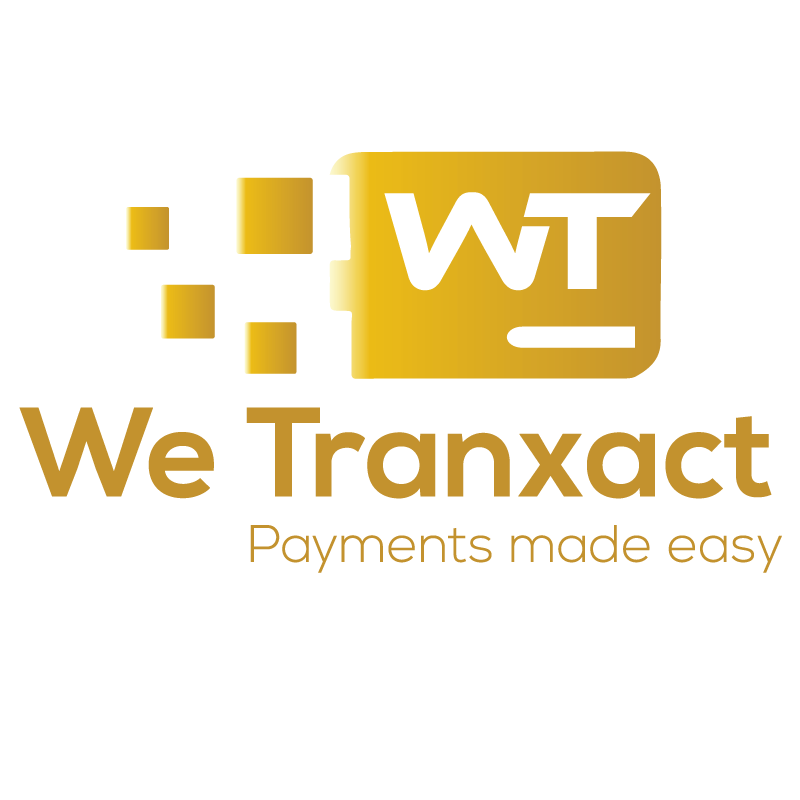Are you a small business owner looking to streamline your operations and improve customer experiences? Look no further than POS software designed specifically for small businesses. This innovative technology is revolutionizing the way small businesses manage their sales, inventory, and customer relationships.
Gone are the days of using outdated cash registers and handwritten receipts. With POS software, you can easily process transactions, track inventory levels, and generate detailed sales reports with just a few clicks. These systems are user-friendly and intuitive, making it easy for even the most technologically-challenged business owner to navigate.
One of the biggest benefits of using POS software for small business is the ability to track customer data and preferences. With this information at your fingertips, you can personalize the shopping experience for each customer, leading to increased customer satisfaction and loyalty. Plus, you can easily create marketing campaigns targeted towards specific customer segments, increasing your chances of driving repeat business.
Not only does POS software make transactions smoother and more efficient, but it also provides valuable insights into your business performance. By analyzing sales data and inventory levels, you can identify trends and make informed decisions about pricing, promotions, and product offerings. This data-driven approach can help you optimize your business operations and maximize profits.
In addition, POS software can also help you manage employee schedules, track performance, and monitor sales in real-time. With this level of visibility, you can identify areas for improvement and make adjustments on the fly to ensure your business is running at its peak efficiency.
In conclusion, POS software for small business is a game-changer for entrepreneurs looking to take their business to the next level. By investing in this technology, you can streamline your operations, improve customer experiences, and drive profitability. So why wait? Upgrade your business today and experience the benefits of POS software firsthand.
As a startup or small business owner, every penny counts when it comes to running your business. One area where costs can quickly add up is in card processing fees. However, there are ways you can save on these costs and keep more money in your pocket.
One tip for saving on card processing costs is to shop around for the best rates. Different providers offer different fee structures, so it’s important to compare options before making a decision. Look for providers that offer competitive rates and low fees, but be sure to read the fine print to understand any additional charges that may apply.
Another way to save on card processing costs is to negotiate with your current provider. If you’ve been a loyal customer and have a strong payment processing history, your provider may be willing to offer you a better rate. Don’t be afraid to ask for a discount or negotiate for a lower fee – the worst they can say is no.
Additionally, consider investing in technology that can help you save on processing costs. For example, using a mobile card reader can lower fees compared to traditional POS systems. Look for tools that streamline the payment process and offer cost-saving benefits for your business.
Lastly, consider passing on processing fees to your customers. While this may seem counterintuitive, many businesses now charge a small convenience fee for customers who choose to pay with a card. This can help offset the cost of processing fees and ensure that your bottom line isn’t taking a hit.
By being proactive and strategic about how you handle card processing fees, you can save your startup or small business valuable money that can be reinvested into growing your business. Don’t let high processing costs hold you back – take control of your expenses and watch your business thrive.
In a world where technology is constantly evolving, businesses are seeking ways to streamline the payment process for their users. Cross-platform payment integration is one such solution that has revolutionized the way consumers make transactions online. By allowing customers to seamlessly pay for goods and services across multiple platforms, companies are able to enhance the user experience and increase customer satisfaction.
Imagine this: You’re shopping online for a new pair of shoes. You find the perfect pair on your favorite retailer’s website, add them to your cart, and proceed to checkout. With cross-platform payment integration, you have the option to choose from a variety of payment methods, whether it be via credit card, PayPal, or even Apple Pay. Gone are the days of having to switch between different payment platforms to complete your purchase. Everything is integrated into one seamless process, making it easier than ever to make a payment.
But the benefits of cross-platform payment integration extend beyond just convenience. By offering users a variety of payment options, businesses are able to cater to a wider range of customers and attract new clientele. For example, some customers may prefer to pay with their credit card, while others may prefer to use a digital wallet like Venmo. By giving users the flexibility to choose their preferred method of payment, businesses can create a more personalized and user-friendly experience.
Furthermore, cross-platform payment integration also helps to increase security for both businesses and customers. With the rise of online payment fraud, it is more important than ever for companies to implement secure payment systems. By using a cross-platform payment integration solution, businesses can ensure that all transactions are encrypted and protected against potential threats. This not only gives customers peace of mind when making a purchase, but also helps to build trust and loyalty with the brand.
Overall, cross-platform payment integration has become a game-changer in the world of e-commerce. By offering a seamless and secure payment experience, businesses are able to enhance the user experience and drive sales. Whether you’re a customer looking to make a purchase or a business looking to improve your payment process, cross-platform payment integration is a trend that is here to stay. So next time you’re shopping online, remember to look out for this innovative feature and enjoy a hassle-free payment experience like never before.
Picture this: you’re eyeing that gorgeous leather bag on an e-commerce site, ready to click “add to cart” when suddenly you realize it’s in a currency you’re not familiar with. Frustrated, you abandon your virtual shopping cart and move on to something else. This scenario is all too common for online shoppers worldwide. But what if there was a way to cater to customers from different countries, making their shopping experience seamless and stress-free? The answer lies in offering multiple currency options on your e-commerce site.
By providing customers with the choice to view prices in their local currency, you’re opening up a world of possibilities. Not only does this make it easier for international customers to understand the value of your products, but it also eliminates any confusion or frustration that may arise from fluctuating exchange rates. This simple yet effective feature can make a huge difference in converting browsing customers into loyal buyers.
But the benefits don’t stop there. Offering multiple currency options can also help you expand your customer base and reach new markets. By catering to customers from different countries, you’re showing them that you value their business and are willing to accommodate their unique needs. This kind of personalized service goes a long way in building trust and loyalty with your customers, ultimately leading to repeat business and positive word-of-mouth recommendations.
In addition, offering multiple currency options can also help mitigate the risk of losing sales due to unforeseen economic events. By allowing customers to choose a stable currency for their purchases, you’re providing them with a sense of security and peace of mind. This can be particularly helpful during times of economic uncertainty when exchange rates are volatile and unpredictable.
So, if you’re looking to take your e-commerce site to the next level and create a truly global shopping experience, consider adding multiple currency options to your platform. Not only will this make it easier for customers from different countries to shop with you, but it will also help you attract new customers, build trust and loyalty, and safeguard your business from economic fluctuations. It’s a win-win for everyone involved!
Looking for the best POS systems to help streamline your business operations? Look no further! In this article, we’ve compiled a list of top-notch POS systems that are sure to cater to all your business needs.
First up on our list is Square POS, a user-friendly system that is perfect for small businesses. With its sleek design and easy-to-use interface, Square POS allows you to accept payments, track sales, and manage inventory with ease. Plus, its affordable pricing makes it a great option for businesses on a budget.
Next, we have Shopify POS, which is ideal for businesses with an online presence. With Shopify POS, you can seamlessly integrate your online and offline sales channels, giving you a holistic view of your business operations. Its powerful features, such as customizable reporting and inventory management, make it a top choice for businesses looking to grow.
Another great option is Lightspeed POS, a versatile system that is perfect for retailers and restaurants alike. With its robust inventory management capabilities and advanced analytics, Lightspeed POS allows you to make data-driven decisions to drive your business forward. Plus, its intuitive interface makes it easy for employees to learn and use.
Last but not least, Toast POS is a fantastic choice for restaurants looking to improve their operations. Toast POS offers features such as tableside ordering, kitchen display systems, and customizable menu options, making it a valuable tool for restaurant owners. Additionally, its integrations with third-party apps make it easy to tailor the system to suit your specific needs.
In conclusion, finding the best POS system for your business can be a daunting task, but with the options listed above, you’re sure to find one that suits your needs. Whether you’re a small business looking for a budget-friendly option or a restaurant in need of advanced features, there’s a POS system out there for you. So why wait? Upgrade your business operations today with one of these top-notch POS systems!
Do you find yourself scratching your head every time you receive your monthly statement from your credit card processor? Are you wondering why your fees seem to fluctuate even though you’re not changing your sales volume? Well, the answer may lie in the number of transactions you process each month.
It’s a common misconception that processing fees are solely based on the total dollar amount of sales. While that is a significant factor, the volume of transactions also plays a crucial role in determining how much you pay in fees. Let’s break it down.
Imagine you run a small boutique that sells handmade jewelry. On a typical month, you make $10,000 in sales with an average ticket size of $50. Now, let’s say you process these sales with an interchange-plus pricing model, where your processor charges you a flat fee plus a percentage of each transaction.
If you have 200 transactions in a month, each transaction will incur its own processing fee. However, if you have 100 transactions that total $10,000, your processing fees will be significantly lower because you’re paying fewer per-transaction fees.
The more transactions you have, the more fees you’ll pay. This is because every time you swipe a card or key in a transaction, your processor incurs costs to authorize and settle that payment. These costs add up, and processors pass them on to you in the form of transaction fees.
But fear not! There are ways to mitigate the impact of transaction volume on your processing fees. For starters, try to bundle transactions together whenever possible. Instead of processing multiple small transactions, consider combining them into larger transactions to reduce the number of per-transaction fees you pay.
Additionally, you can negotiate with your processor to see if you can get a better deal based on your transaction volume. Some processors offer volume discounts for businesses that process a high volume of transactions each month.
In conclusion, transaction volume can have a significant impact on your card processing fees. By understanding how this works and taking strategic steps to manage your transaction volume, you can save money and streamline your payment processing. So next time you review your statement, you’ll have a better grasp of why your fees are what they are.
In today’s global marketplace, selling products online has never been easier. With just a few clicks, you can reach customers from all over the world. But with this widespread reach comes the challenge of managing multi-currency transactions in e-commerce.
Imagine this: You’re a small business owner based in the United States, selling handcrafted jewelry to customers in Europe and Asia. You’ve set up your online store, you’ve got your products ready to ship, and you’re ready to start making sales. But when a customer from Sweden wants to buy one of your necklaces, you’re suddenly faced with the dilemma of how to process their payment in Swedish krona.
Managing multi-currency transactions in e-commerce can be tricky, but with the right tools and strategies, you can navigate the world of international sales with ease. One key aspect to consider is choosing a payment processor that supports multiple currencies. Platforms like PayPal, Stripe, and Shopify Payments allow you to accept payments in different currencies and automatically convert them into your local currency. This simplifies the process for both you and your customers, ensuring a smooth transaction every time.
Another important factor to consider is keeping an eye on currency exchange rates. Fluctuations in exchange rates can impact your revenue and profit margins, so it’s crucial to stay informed and make adjustments to your pricing strategy when necessary. You can use online tools and services to track exchange rates and set up alerts for any significant changes.
Additionally, offering localized pricing can help attract international customers and improve their shopping experience. By displaying prices in their local currency, you make it easier for them to understand the cost of your products and make a purchase decision. Most e-commerce platforms offer the option to automatically display prices in the customer’s currency based on their location, making it a simple and effective way to enhance your global sales.
Managing multi-currency transactions in e-commerce may seem daunting at first, but with the right tools and strategies in place, it can become a seamless part of your online business operations. By choosing the right payment processor, keeping an eye on exchange rates, and offering localized pricing, you can expand your reach and increase your revenue in the ever-growing world of e-commerce.
In today’s fast-paced world, convenience is king. And nothing screams convenience quite like the rise of digital wallets. Gone are the days of fumbling through your purse or wallet for that pesky credit card – now, all you need is your trusty smartphone to make a purchase. But how exactly are digital wallets changing consumer shopping habits?
Picture this: you’re walking down the street, window shopping and admiring all the latest trends. Suddenly, you spot something that catches your eye. With just a few taps on your phone, you can now make that impulse buy without missing a beat. No need to worry about carrying cash or remembering your PIN code – it’s all right there at your fingertips.
But it’s not just about the convenience factor. Digital wallets are also changing the way we budget and track our spending. With features like real-time notifications and spending analytics, consumers can now keep a closer eye on their finances and make more informed purchasing decisions. No more overspending or impulse buys – digital wallets are putting the power back in the hands of the consumer.
And let’s not forget about the security aspect. With digital wallets, your sensitive financial information is encrypted and stored securely on your device, keeping it safe from prying eyes and potential hackers. Plus, many digital wallets offer added security features like biometric authentication and fraud protection, giving consumers peace of mind when making transactions online or in-store.
So, whether you’re a tech-savvy millennial or a seasoned shopper looking to simplify your life, digital wallets are changing the game when it comes to how we shop. With their convenience, budgeting tools, and security features, it’s no wonder more and more consumers are ditching their physical wallets in favor of their digital counterparts. Who knows what the future holds for digital wallets, but one thing’s for sure – they’re here to stay.
So, you’ve finally decided to take the plunge and start accepting credit card payments at your small business. Congratulations! However, as you start shopping around for credit card terminals, you quickly realize that there are two options available: leasing or buying.
Leasing a credit card terminal may seem like a convenient option at first. You get the latest technology without a large upfront investment, plus you can easily upgrade when new models become available. However, it’s important to remember that leasing comes with its fair share of fees. Monthly rental fees, maintenance fees, and other hidden charges can quickly add up over time, costing you more in the long run.
On the other hand, buying a credit card terminal may require a higher initial investment, but it can save you money in the long term. By purchasing a terminal outright, you avoid monthly rental fees and lease agreements. Plus, you have the freedom to shop around for the best deal and negotiate with suppliers for a lower price.
Ultimately, the decision to lease or buy a credit card terminal depends on your individual needs and budget. If you’re a small business owner with limited funds, leasing may be the more practical choice. However, if you’re looking to save money in the long run and have the financial means to do so, buying a terminal may be the smarter option.
As you weigh the pros and cons of leasing versus buying a credit card terminal, be sure to factor in other considerations such as customer service, technical support, and warranty coverage. After all, you want a reliable terminal that will help streamline your payment process and keep your customers coming back.
Whether you decide to lease or buy, remember that credit card terminal fees are just a small part of running a successful business. With the right terminal and payment processing system in place, you can focus on what really matters – delivering top-notch products and services to your customers. Cheers to smooth transactions and happy customers!
In a world where convenience is king, wireless credit card processing has become the new frontier for businesses looking to streamline their payment processes. Gone are the days of being tethered to a clunky POS terminal – with wireless credit card processing, you can now take payments on-the-go, wherever and whenever you need.
Picture this: you’re a small business owner running a pop-up shop at a music festival. Customers are flooding in, eager to purchase your handmade wares. With a wireless credit card reader in hand, you can easily swipe, dip, or tap your way to completing transactions in a matter of seconds. No more fumbling with cash or waiting for checks to clear – just seamless, secure payments at your fingertips.
But it’s not just small businesses that are benefiting from wireless credit card processing. Large retailers, event planners, food trucks, and even nonprofit organizations are all jumping on the wireless bandwagon. With the ability to process payments anywhere there’s a cellular or wifi connection, the opportunities are endless.
Not only does wireless credit card processing make life easier for businesses and their customers, but it also offers increased security measures. Most wireless card readers come equipped with encryption technology to protect cardholder information, giving peace of mind to both parties involved in the transaction.
So whether you’re a budding entrepreneur looking to expand your business on the go, or a seasoned retailer wanting to ditch the old-school terminals, wireless credit card processing is the way to go. With its convenience, security, and ease of use, it’s no wonder why more and more businesses are making the switch. Say goodbye to the days of being tied down by wires and hello to the freedom of wireless credit card processing.











